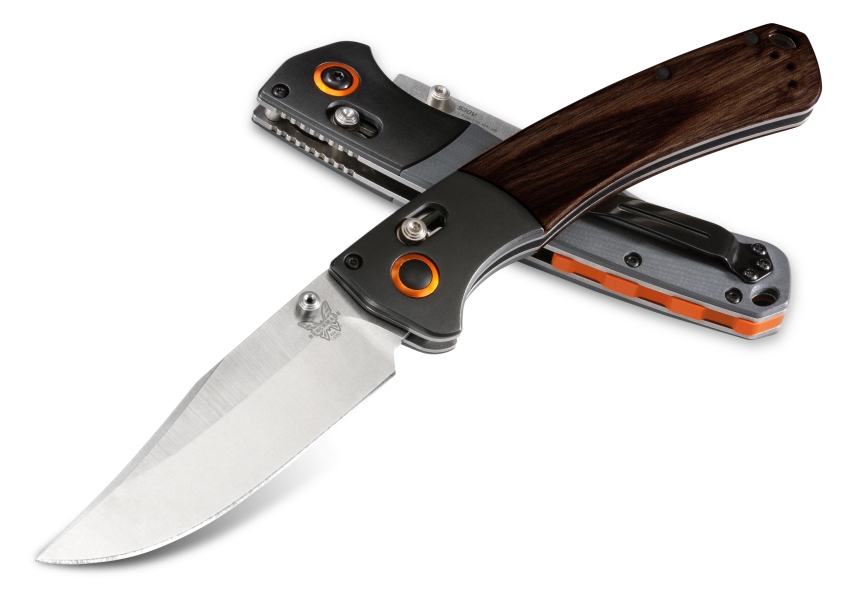

We may earn revenue from the products available on this page and participate in affiliate programs. Learn more ›
The most important pack item on any outdoor adventure is the knife. Bear Grylls might wave his knives around extolling the virtues of a blade in survival situations—of which there are many—but the main reason is that it’s just plain useful for cutting up camp food and paracord and whatever else you might need it for on the trail. Knives, however, can be very expensive. If you’re not careful you can wind up blowing cash on a knife with a whole lot of features that a backpacker doesn’t need. Or worse, succumb to Crocodile Dundee fever and walk away from a seller with a veritable short sword that makes you look a fool. Here are some tips from the experts to help you avoid this fate.
Knife vs. Multi-tool
There are a lot of knives out there. And there are a lot that are not just knives, but multi-tools—folding contraptions fixed with all kinds of doo-dads like bottle openers and leather punches in addition to a blade. There’s no right or wrong answer on whether you should get a plain old knife or a magic do-everything tool, but there are a few things to consider.
If you’re just backpacking, you aren’t going to use 85 percent of the gadgets on a multi-tool (cough, leather punch). Knife expert and Product Developer for L.L. Bean, Kevin Murray, explained it to Popular Science like this: “If you’re a minimalist, you would have a knife. If you’re a car camper, or go camping with your family for a week at a campground, it’s nice to have something like a multitool, because you can do so many things with it.”
If you need a knife though, get a knife. Not a multi-tool. Adventure writer Wes Siler described added gadgets to Popular Science as “complication over quality.”
Folding or Fixed
For walking on the trail or hanging at the campsite, a folding blade will do the job just fine, but there are a couple reasons for getting a knife with a fixed blade: safety, cleanliness, and strength. Fixed blades, for example, do not run the risk of closing on your fingers. Even folding knives with a locking blade—and you should definitely use one with a locking blade—can sometimes fail. “If it slips, it can cut you pretty good,” warned Murray.
A fixed blade is also superior If you’re doing any kind of hard work at a campsite like cutting up wood for kindling or slicing food. (The folding ones get a lot of crud on them.) “Fixed blades have no moving parts, and are made from a single piece of steel, so they’ll always be stronger than even the best folding knives,” said Siler.

Type of Steel
A John Doe hiker/camper only needs a blade made of stainless steel. It “can be sharpened and will stay sharp and won’t corrode easily,” said Murray, adding “It holds an edge, and especially if you aren’t very hardcore, you won’t have to sharpen it very often.” (If you are hardcore, carbon steel is very strong.)
When you do sharpen it, it’s a whole lot easier if the blade is not serrated. It might look cool and make you feel like Rambo, but “There’s not really anything you would need a serrated knife for,” said Zach Fisher, Wilderness Guide and Educator with Discover Outdoors, “unless you’re cutting bread.”

Length
It’s easy to go way overboard on the length of a knife. “Sometimes ego gets involved and people get a great big thing on their belt,” said Murray. “Three to four-and-three-quarter inches is about as big as I’d want to get—and probably about as small as I’d want to get, too.” Plus, if you live in a place like NYC, you wouldn’t want to drop the cash on Excalibur and then have it taken away by the cops because it’s over the legal limit.
Weight
The last thing to keep in mind when picking a knife is the weight. “Weight itself is way down the list of important knife features,” said Siler. But quality of the steel aside, a blade with extra thickness and weight is going to be stronger. Fisher explained that for him, “If I’m taking a knife out and I’m going to be out for awhile, I want something solid. Something with some heft.” This is a bigger deal if you ever plan on minimalist camping—a hefty knife can cut branches for a fire.
So if Popular Science were to get the knife for you, we’d get one made of stainless steel, about 4 inches long, medium weight, with a straight edge, and a fixed or locking blade (because your fingers). Two of our favorites: Benchmade’s Crooked River, and Mora’s Companion. Siler’s choice: ESEE 3HM.
Now go get yourself a dang knife.

